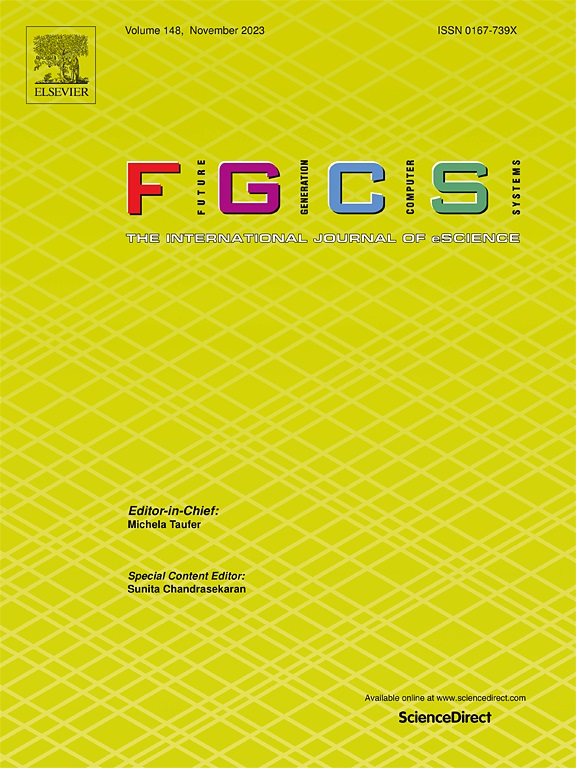针对云中波动的工作负载的自适应容器自动伸缩
IF 6.2
2区 计算机科学
Q1 COMPUTER SCIENCE, THEORY & METHODS
Future Generation Computer Systems-The International Journal of Escience
Pub Date : 2025-04-28
DOI:10.1016/j.future.2025.107872
引用次数: 0
摘要
数据库即服务(Database-as-a-Service, DBaaS)通过资源容器为多个租户提供服务,这些资源容器可以随时间扩展以满足服务级别协议。为DBaaS设计容器自动伸缩方法可以帮助减少它们的支出。强化学习(RL)由于其在动态环境中的鲁棒性而在云资源扩展中表现出强大的性能。然而,基于强化学习的方法无法在波动的工作负载下保持高性能,因为它们的固定动作设计无法适应资源需求的众多变化。本文提出了一种名为Asner的自适应容器自动缩放方法,该方法采用改进的基于强化学习的算法和动态动作模型来解决固定动作设计问题。Asner由一个资源估计模型(Estimator)和一个基于rl的缩放算法(Scaler)组成。Estimator采用基于图的方法来估计容器扩展的工作负载资源需求。Scaler采用改进的基于强化学习的算法生成容器扩展策略,并采用动态动作模型来适应工作负载的波动。我们的实验结果表明,Estimator在TPC-DS数据集下的准确率约为93%,Scale的性能比最先进的RL提高了约30%,Asner的性能比其他方法提高了45%。本文章由计算机程序翻译,如有差异,请以英文原文为准。
Adaptive container auto-scaling for fluctuating workloads in cloud
Database-as-a-Service(DBaaS) provides services for multiple tenants through resource containers, which are allowed to scale over time to fulfill the service-level agreements. Designing container auto-scaling methods for DBaaS can help reduce their expenditure. Reinforcement Learning (RL) shows powerful performance in cloud resource scaling due to its robustness in dynamic environments. However, the RL-based methods fail to maintain high performance for fluctuating workloads since their fixed-action design cannot adapt to numerous variations of the resource demand. This paper proposes an adaptive container auto-scaling method called Asner that includes an improved RL-based algorithm with a dynamic action model to solve the problem of fixed-action design. Asner consists of a resource estimation model (Estimator) and a RL-based scaling algorithm (Scaler). Estimator adopts a graph-based method to estimate the workload resource demand for container scaling. Scaler generates the container scaling strategy by employing an improved RL-based algorithm with a dynamic action model for adapting to the fluctuating workload. Our experiment results show that Estimator achieves about 93% accuracy under the TPC-DS dataset, Scale’s performance is about 30% higher than the state-of-the-art RL, and Asner improves its performance by up to 45% compared to other methods.
求助全文
通过发布文献求助,成功后即可免费获取论文全文。
去求助
来源期刊
CiteScore
19.90
自引率
2.70%
发文量
376
审稿时长
10.6 months
期刊介绍:
Computing infrastructures and systems are constantly evolving, resulting in increasingly complex and collaborative scientific applications. To cope with these advancements, there is a growing need for collaborative tools that can effectively map, control, and execute these applications.
Furthermore, with the explosion of Big Data, there is a requirement for innovative methods and infrastructures to collect, analyze, and derive meaningful insights from the vast amount of data generated. This necessitates the integration of computational and storage capabilities, databases, sensors, and human collaboration.
Future Generation Computer Systems aims to pioneer advancements in distributed systems, collaborative environments, high-performance computing, and Big Data analytics. It strives to stay at the forefront of developments in grids, clouds, and the Internet of Things (IoT) to effectively address the challenges posed by these wide-area, fully distributed sensing and computing systems.

 求助内容:
求助内容: 应助结果提醒方式:
应助结果提醒方式:


